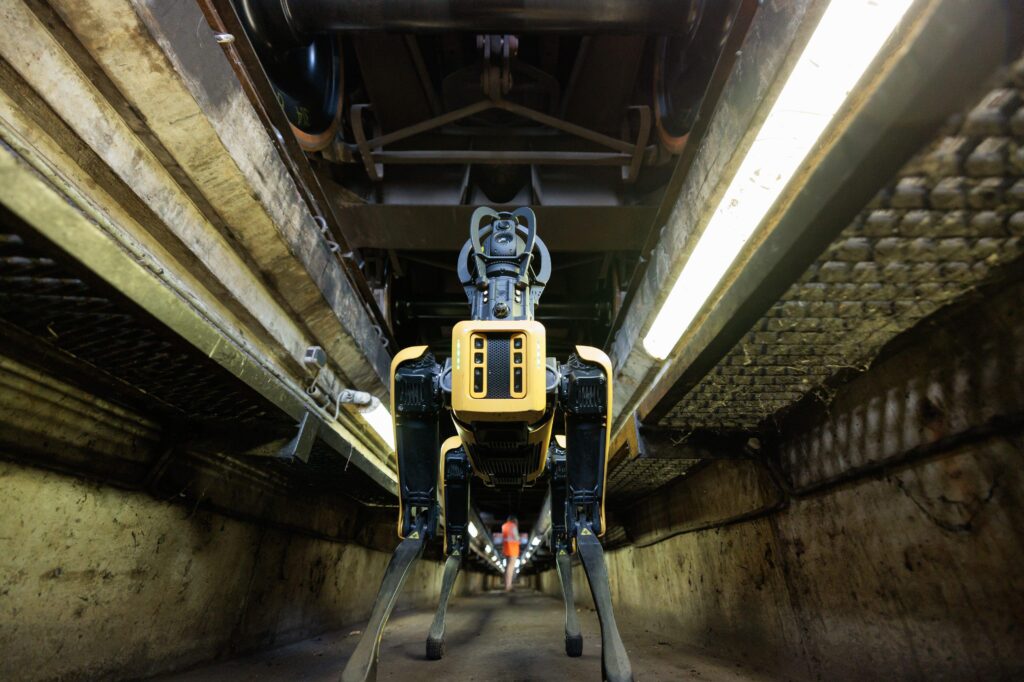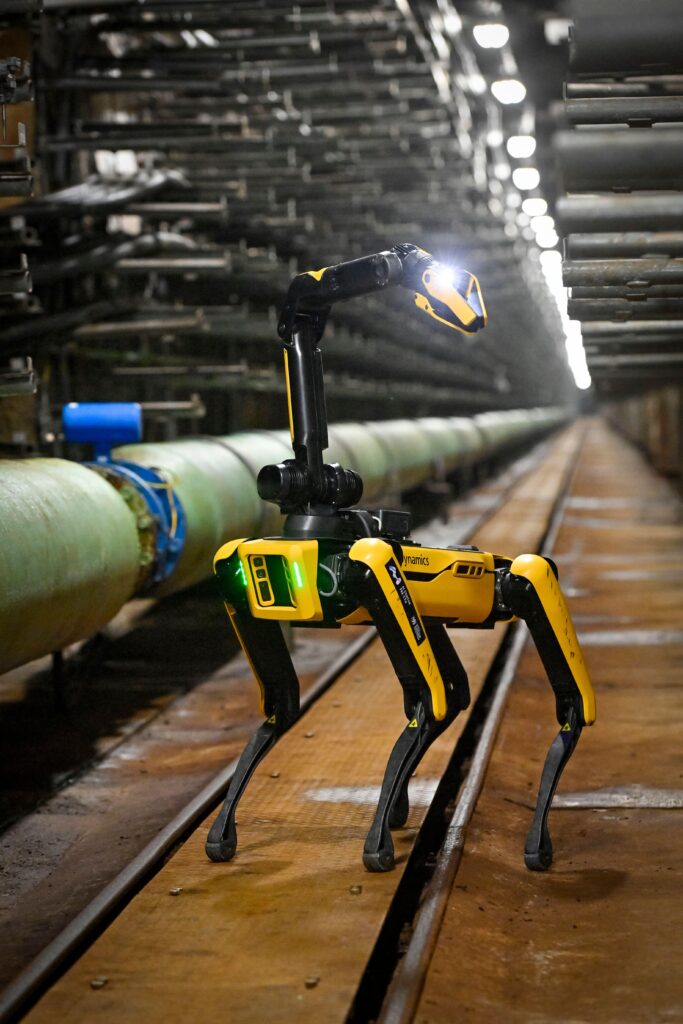Arguably the most well-known of the Boston Dynamics mobile robots is dubbed “SPOT”, a nod to its dog-like quadrupedal robot. When initially released by Boston Dynamics in 2016, it was only available through a lease. Only recently, after being purchased by Hyundai in 2020, did these Robo-Dogs become commercially available for roughly $74,500K. They sold 400 SPOTs in the first six months since that acquisition. At the close of 2022 it was reported that 1000 units had been put into service.
The two main questions that come to mind are: what is SPOT, and why would I use it? The popular view is to consider our canine-like friend as an intelligent, autonomous platform that can travel any sort of terrain that a person can and record/transmit data based on the sensors it carries onboard. The use cases for SPOT center around “smart” inspection of critical equipment, especially in industrial settings. The examples on the Boston Dynamics web site highlight a wafer fab, a nuclear power plant and a construction site. SPOT has the ability to climb stairs or avoid obstacles. And should it somehow get tripped up, activating the self-righting feature ensures that SPOT can get right back on its feet. Success in these areas has allowed Boston Dynamics (Hyundai) to now offer three upgrade options: SPOT Enterprise, Scout RC Software, and the SPOT arm.
Enterprise Version Of Spot
This is the basic platform and contains the following standard features.
• Continuous data collection in remote sites.
• Auto-walk a predefined patrol route, while gathering data.
• Video, sound, odors (gas detection) and environmental (temperature, humidity, etc.).
• Built in dock detection for ongoing charging docks throughout the facility.
• Two hour full recharge time
• Upgraded hardware enables extended auto-walk missions.
• Ethernet added to the docking station so that data can be downloaded while charging.
• Enhanced WiFi onboard for greater signal range while Spot is on patrol.
SPOT can also be used with specifically designed fiducials, a form of QR code, that allows it to follow from one specific fiducial to the next and create a local map within its internal world map. This might be useful if you have several SPOTs running and wanted to avoid overlap.

Scout Software Enhancement
Normal operation of SPOT is through the SPOT Tablet – Samsung Galaxy Tab Active 3. It automatically connects with SPOT through Bluetooth once SPOT powers up. The main advantage of the Scout enhancement is that it is browser based which allows control from any connected smart device: phone tablet or computer. Scout enables the operator to use a keyboard or a third party joystick controller to easily maneuver Spot around. The new software interface provides a live video feed from Spot. “Touch-to-go” is a feature that allows the operator to tap anywhere within SPOT’s field of vision and that touch becomes the next target location for SPOT to move to. And, of course auto-navigate allows SPOT to avoid any obstacles along the way.
Operators can set up predefined auto-walk missions, and then simply monitor SPOT as it runs the mission autonomously. If an incident occurs, the operator can intervene. SPOT is self-righting out of the box in case it trips or falls over. And if it moves out of WiFi coverage, it will retrace its steps until it recovers the connection.
It is possible to easily share live video and sensor feeds to any other viewer with a browser and a network connection, including another SPOT. The Scout package is designed around simplicity of operation. Scout now includes an on-site server box that is ready for rack mounting into the facility’s data center. This gives operators complete control over network and data security, and of course all data and communication is encrypted. Spot requires a local WiFi connection, but not an internet connection. Spot can be operated completely on a local area network.
Scout has an autodetect for stairs and can use them autonomously, even during an auto-walk mission. Scout really is a “ready-to-deploy” solution.
The Spot Arm

Boston Dynamics is commercializing the Spot Arm as a fully supported add-on feature to Spot. The six degree-of-freedom (DOF) arm is mounted on the front shoulders creating a giraffe-like appearance once deployed. The end effector contains an imaging depth sensor along with a 4K RGB camera for close up inspection. The arm is about one meter in length, can lift 5 kg, and can move up to 10 m/s.
The arm can identify a door, then locate and operate the doorknob to open that door.
It can also operate valves under the direction of the remote operator. Boston Dynamics is publishing an API for third party developers so the capabilities of the Spot Arm should grow with time. As a fully integrated part of the overall system, arm movements do not unbalance the robot or cause it to tip over. It is essential about as mobile as a human.
Remote data collection applications, essentially a 24 hour/day roving “watchdog”, are the ideal use case for the Spot robot. With the availability of these improved functions Spot is easier to set up and start seeing the value. Spot is opening up applications that were impossible only a few years ago.
